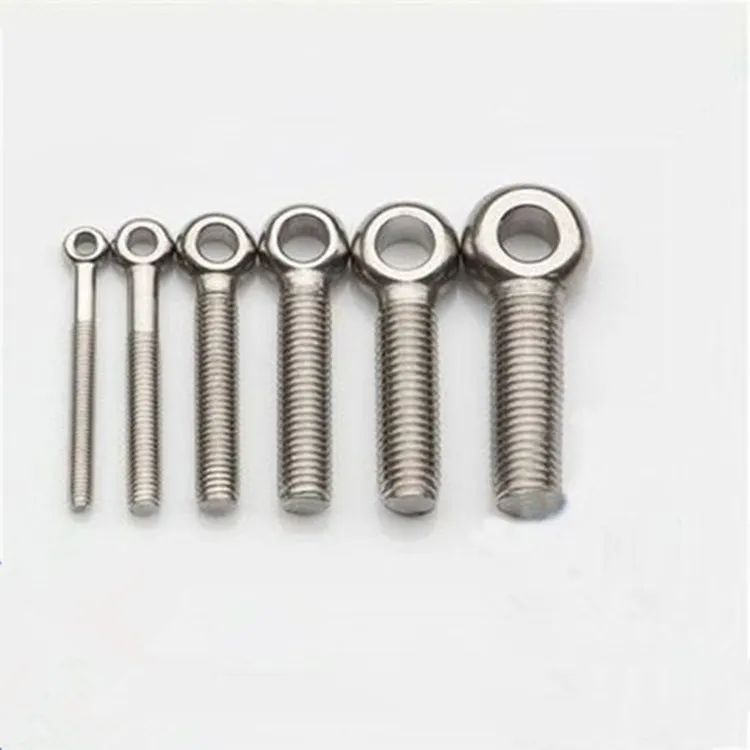

High-Quality Large Metal Washers for Various Industrial Applications and Reliable Performance
ส.ค. . 11, 2024 18:28 Back to list
High-Quality Large Metal Washers for Various Industrial Applications and Reliable Performance
The Importance of Large Metal Washers in Engineering and Construction
In the realm of engineering and construction, the ubiquitous small components that often go unnoticed play a pivotal role in ensuring structural integrity and functionality. Among these components, large metal washers stand out as essential elements that contribute to the overall performance and durability of various applications. This article delves into the significance, applications, and types of large metal washers, highlighting their indispensable nature in various industries.
What are Large Metal Washers?
Large metal washers are flat, circular disks made from different types of metals, including steel, stainless steel, aluminum, and brass. They are designed to distribute the load of a fastener, such as a bolt or a screw, over a larger surface area. This not only helps to prevent damage to the material being fastened but also increases the load-bearing capacity and enhances the stability of the connection.
Applications of Large Metal Washers
Large metal washers find applications across a diverse range of industries, including construction, automotive, aerospace, and manufacturing.
1. Construction In construction, large metal washers are used extensively in securing heavy beams and structures. They provide stability to connections between various materials, ensuring that buildings can withstand loads and environmental factors such as wind and earthquakes.
2. Automotive In the automotive industry, large washers are integral to the assembly of vehicles. They are used to secure various components, from the engine to the suspension system, contributing to the safety and performance of the vehicle.
3. Aerospace The aerospace sector demands high precision and reliability, making large metal washers essential. They are used in aircraft assembly, where they help in securing components that experience extreme stresses and temperature variations.
large metal washers

4. Manufacturing In manufacturing processes, large metal washers are often utilized in machinery and equipment. They help in reducing friction and wear and tear between parts, thereby prolonging the lifespan of equipment.
Types of Large Metal Washers
There are various types of large metal washers tailored for specific applications and environmental conditions. Some of the most common types include
- Flat Washers The most basic type, flat washers are used to distribute the load and avoid damage to the surface of the material.
- Lock Washers These washers are designed to prevent loosening under vibration and dynamic loading, making them ideal for high-stress applications.
- Fender Washers With a larger outer diameter than standard washers, fender washers are used to provide a greater load distribution over a wider area, making them useful in applications with soft materials or thin steel.
- Spring Washers These provide a spring action and help maintain tension in a joint, compensating for any potential movement over time.
Conclusion
Large metal washers may seem like small components, but their impact on engineering and construction is monumental. They enhance the durability, reliability, and safety of various structures and mechanisms. As industries continue to evolve and demand higher performance standards, the role of these essential washers will only grow in importance. Whether it's in a skyscraper, an automobile, or an aircraft, large metal washers ensure that the components hold together securely, enabling the safe and efficient functioning of complex systems. Hence, understanding their significance can lead to better design decisions and ultimately contribute to the success of engineering projects.
Latest news
-
Premium Fasteners Manufacturer | AI-Driven Solutions
NewsAug.01,2025
-
Hot Dip Galvanized Bolts - Hebei Longze | High Strength, Corrosion Resistance
NewsAug.01,2025
-
High-Strength Hot Dip Galvanized Bolts - LongZe | Corrosion Resistance, Custom Sizes
NewsAug.01,2025
-
Best Self Tapping Screws for Drywall - Fast & Secure Installation
NewsJul.31,2025
-
High-Strength Hot Dip Galvanized Bolts-Hebei Longze|Corrosion Resistance&Customization
NewsJul.31,2025
-
Hot Dip Galvanized Bolts-Hebei Longze Metal Products|Corrosion Resistance&High Strength
NewsJul.31,2025

